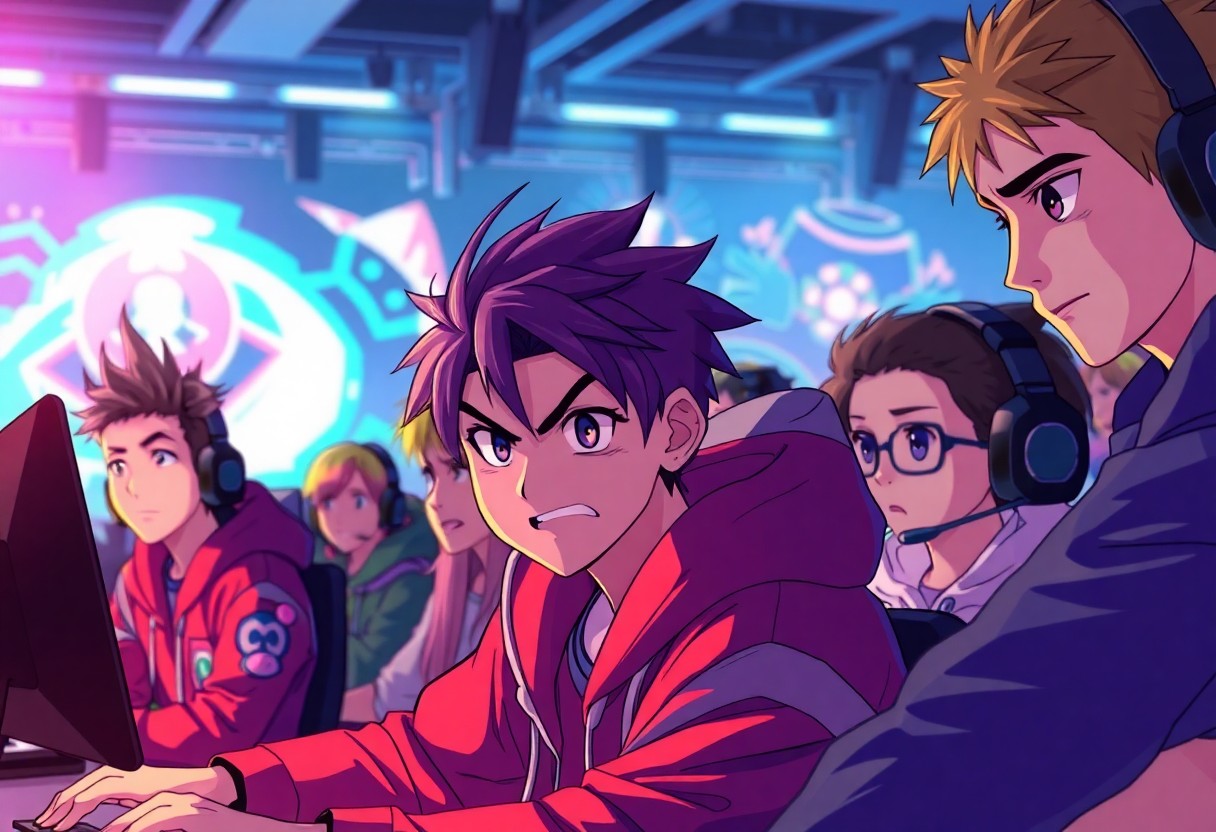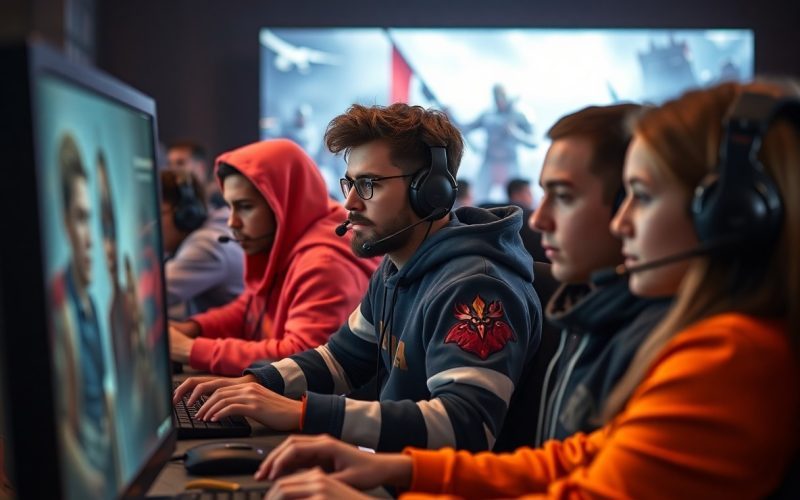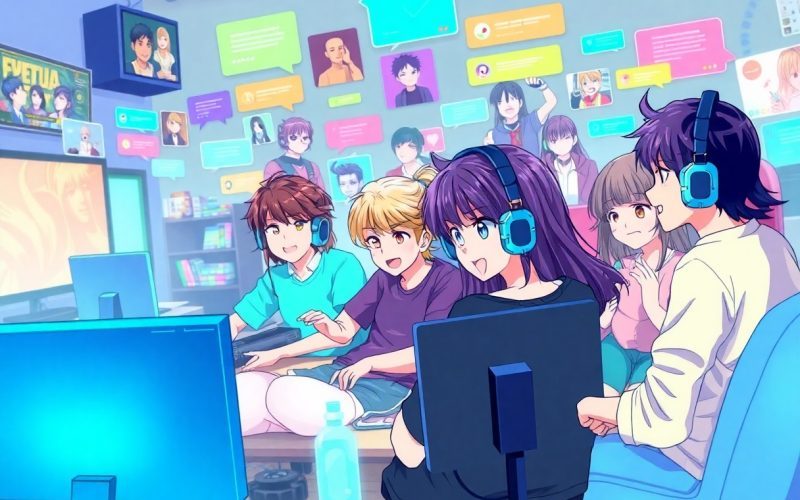There’s a growing concern over toxic behaviour in the gaming community, particularly in popular titles like Valorant. This competitive first-person shooter has become notorious for instances of harassment, negativity, and unsportsmanlike conduct among players. As Riot Games strives to foster a positive gaming environment, the question arises: can these negative behaviours be effectively addressed? In this post, we will research into the causes of toxicity within Valorant and explore potential solutions to create a more welcoming and enjoyable experience for all players.
The Psychological Roots of Toxicity in Gaming
Toxic behavior in gaming, particularly in competitive environments like Valorant, can often be traced back to various psychological factors. Players sometimes experience heightened emotions due to intense competition, with stress and frustration leading to negative interactions. Understanding these psychological roots provides insight into how players might react under pressure, giving a clearer picture of the environment that fosters toxicity.
Competitive Pressure and Its Toll on Players
The intense competitive atmosphere in Valorant can create a breeding ground for toxicity. Players, driven by the desire to win or to perform at their best, may lash out when faced with disappointing outcomes or perceived shortcomings from teammates. This pressure often leads to quick, aggressive responses instead of constructive communication, as emotions can quickly cloud judgment during high-stakes matches.
The Role of Anonymity in Escalating Aggression
Anonymity in online gaming platforms can significantly amplify aggressive behavior. When players feel they are shielded from accountability, they are more likely to engage in toxic antics, free from the fear of repercussions. This sense of detachment fosters an environment where insults and degrading remarks become commonplace, as players perceive their actions as having no real-world consequences. This behavior undermines teamwork and discourages a positive gaming experience for all involved.
Research indicates that anonymity can diminish empathy, making it easier for individuals to display toxicity online. A study published in the Journal of Experimental Social Psychology found that participants who played in anonymous contexts were more likely to engage in hostile behavior. This suggests that removing identifying information reduces the effective social norms that usually limit aggression in face-to-face interactions. In competitive gaming like Valorant, the lack of accountability is a significant factor in escalating conflicts, as players are emboldened to act in ways they might not consider in a more transparent environment.
Analyzing the Impact of Toxic Behavior on the Valorant Community
Toxic behavior in Valorant significantly affects both the community and the overall gaming experience. Negative interactions can create a hostile environment, prompting players to disengage from matches or even abandon the game altogether. This behavior not only diminishes competitiveness but also erodes the sense of community, leading to a less inviting atmosphere for both veterans and newcomers alike.
Effects on Player Retention and Game Enjoyment
Player retention is directly influenced by the presence of toxicity, as many gamers report feeling discouraged or frustrated after encountering hostile teammates. A survey conducted by the developers revealed that 76% of players expressed a decline in their enjoyment of the game due to toxic interactions, often leading to a significant drop in engagement levels. This exodus not only disrupts match balance but also negatively impacts the community’s cohesiveness.
Toxicity’s Ripple Effect on New Players and the Game’s Future
The initial experiences of new players can shape their long-term association with Valorant. If they encounter toxicity during their early matches, they may quickly feel overwhelmed or unwelcome. This discouragement can result in a decline in new player registrations, threatening the future viability of the game as it struggles to maintain a fresh and diverse player base.
As new players step into Valorant, they might only encounter toxic behavior initially, leading to an immediate feeling of alienation. When this unwelcome experience is compounded by a lack of support structures or moderation efforts, these new players may not return, significantly impacting the player demographic. Studies show that games with higher toxicity rates often lose up to 50% of their new players within the first month. Consequently, a dwindling player base diminishes the dynamic environment crucial for competitive play and innovation, threatening the game’s longevity and relevance in the esports landscape. Without intervention, the cycle of toxicity can stifle community growth and ultimately undermine Valorant’s future as a leading title in competitive gaming.
Assessing Current Mitigation Strategies in Valorant
Valorant’s approach to mitigating toxic behavior involves a combination of automated and community-driven strategies. The current mitigation strategies, including robust reporting systems and player education initiatives, have shown some effectiveness in reducing toxicity. However, trends indicate that while incidents of severe toxicity have decreased, other forms of harassment persist, suggesting that players may adapt their behavior rather than alter it fundamentally. Continuous evaluation and refinement of these strategies are necessary to ensure they are addressing the evolving nature of toxic interactions in the game.
Reporting and Penalty Systems: Are They Enough?
The reporting and penalty systems in Valorant, including a tiered punishment model for offenders, provide a framework for accountability. However, many players express doubt about the efficacy of these measures, often citing a perceived lack of swift consequences for toxic behavior. Studies indicate that a delay in punitive action can diminish the deterrent effect, as players may feel emboldened to continue their negative behavior without immediate repercussions. Effective communication regarding outcomes of reports could enhance player trust and compliance within the reporting system.
Community Moderation: Leveraging Player Engagement
Community moderation harnesses the collective power of the player base to identify and address toxic behavior. By empowering players to take an active role in maintaining a positive environment, developers can foster a culture of accountability. Initiatives like player-led moderation tools and community guidelines encourage players to engage with one another constructively, creating an ecosystem where positive behavior is celebrated. Similar systems in platforms like Discord have shown that community engagement can lead to decreased toxicity and enhanced player satisfaction.
Studies indicate that when players feel a sense of ownership over their community, they exhibit more constructive behavior, reducing instances of toxicity. Platforms like Fortnite successfully implemented community-driven reporting channels and rewards for positive contributions, showcasing potential pathways for Valorant. By integrating player feedback into moderation processes and amplifying community voices, Valorant can create an inclusive space that empowers players to uphold standards of sportsmanship actively. Engaging players in crafting the cultural narrative of Valorant ensures they have a stake in fostering a respectful gameplay experience.
Innovations in Game Design to Curb Toxic Behavior
Game developers are increasingly integrating innovative designs specifically to address toxic behavior. These innovations aim to foster a healthier gaming environment by reshaping player interactions and promoting positive behavior. This includes strategies like the introduction of community moderation tools, enhanced reporting features, and systems that encourage teamwork and collaboration, all designed to create a more pleasant gaming experience.
Implementing Positive Reinforcement Mechanisms
Positive reinforcement mechanisms serve as a powerful tool to encourage good behavior among players. Reward systems, such as badges or in-game currency that can be earned through cooperative play and sportsmanship, motivate players to contribute positively to their team dynamics. Such mechanisms not only recognize individual efforts but also promote a culture of respect and collaboration, effectively diminishing toxic interactions.
Adaptive Matchmaking Systems: Reducing Friction Among Players
Adaptive matchmaking systems represent a significant development in addressing player toxicity by pairing individuals based on skill levels, play styles, and behavior patterns. This approach minimizes the chances of mismatches that can lead to frustration, as players are less likely to encounter skilled adversaries or teammates who contribute to a negative gaming experience.
The core of adaptive matchmaking systems lies in analyzing a player’s historical behavior and adjusting matchmaking criteria accordingly. For instance, if a player consistently demonstrates toxic tendencies, they may be matched with others who exhibit similar behaviors, creating an environment that discourages negativity while allowing those who wish to improve to play alongside like-minded teammates. This tailored approach not only enhances overall enjoyment but also encourages players to evolve their in-game conduct, fostering a culture of accountability and sportsmanship within the community. Riot Games has begun implementing similar strategies in their own titles, showcasing the potential effectiveness of such systems in curbing toxicity across gaming platforms.
Shifting the Culture: Strategies for Building a Positive Community
Transforming the culture surrounding Valorant requires a multifaceted approach, incorporating education, incentives, and community involvement. Implementing strategies that highlight sportsmanship and collaboration can significantly reduce toxic behaviors. Game developers and community leaders must actively promote a supportive environment where players feel valued and encouraged to engage positively. This shift demands commitment from both players and the developers to foster a healthier gaming landscape, setting a foundation for long-term change.
Encouraging Positive Communication and Teamwork
Fostering an environment where players communicate positively can be achieved through structured in-game incentives that reward cooperation and teamwork. By integrating mechanics such as commendations or rewards for being encouraging and collaborative, players are more likely to adopt constructive attitudes. Additionally, educational resources that guide players on effective communication can help in reducing misunderstandings and conflict, ultimately creating a conducive atmosphere for all players.
The Role of Streamers and Influencers in Promoting Healthy Play
Streamers and influencers significantly shape gaming culture and community dynamics, making their role in promoting healthy play invaluable. By modeling positive behavior and engaging their audiences with messages of respect and sportsmanship, they can influence perceptions and standards within the community. Their substantial reach allows them to create a ripple effect that encourages viewers to adopt similar positive attitudes in their gameplay.
For instance, popular streamers can incorporate ‘positive play challenges’ during their broadcasts, motivating their audience to prioritize teamwork and respect over competitiveness. Platforms like Twitch often showcase player interaction, creating an environment where the norms set by influencers directly impact viewers’ behaviors in their games. Responding to disrespectful behavior or highlighting positive interactions during streams offers a prime opportunity to educate viewers about the importance of empathy and camaraderie in competitive settings, thereby fostering a healthier community overall.
To wrap up
From above, it is evident that addressing toxic behavior in Valorant requires a multifaceted approach, combining effective reporting systems, community engagement, and robust in-game measures. While fostering a positive gaming environment is challenging, game developers and players alike hold the responsibility to cultivate a culture of respect and sportsmanship. Continuous monitoring of player behavior, coupled with proactive intervention strategies, can pave the way for a more enjoyable experience for all participants. Ultimately, with collective effort, the issue of toxicity can be mitigated, leading to a healthier gaming community.







